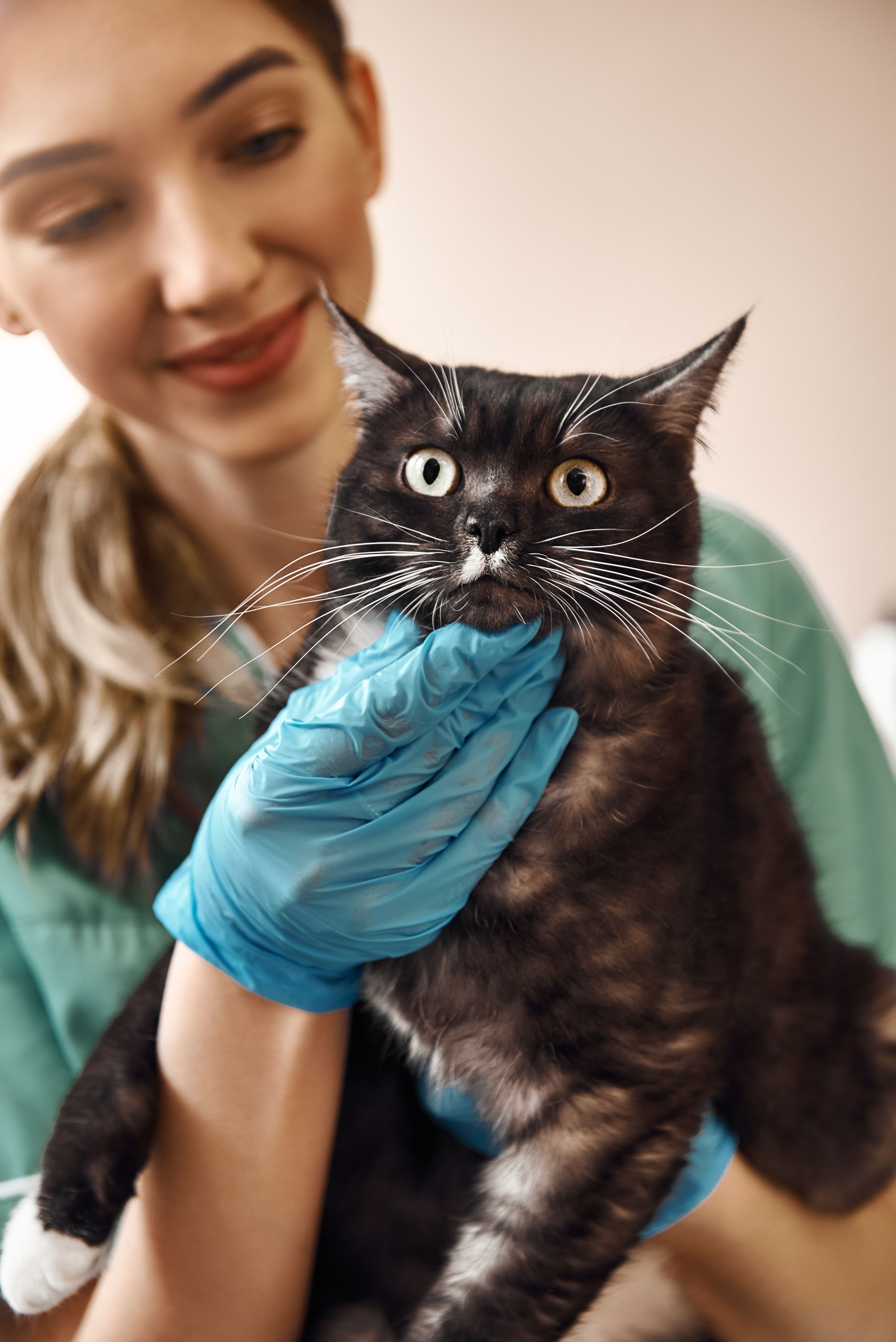
Many veterinary professionals agree that Fear Free is a great concept, but some argue that “it takes too long to be practical.” I admit, I had my reservations when I became Fear Free certified several years back—largely because I was already comfortable identifying fear in dogs and cats. But honestly, it wasn’t until I became Fear-Free certified that I realized I had to rethink everything I thought I knew about being a veterinarian (from exams to surgery to client education).
The more I incorporated Fear Free principles into my daily routine, the more instinctual it became. Cats who were untouchable without injectable sedation could now be examined with feline-friendly handling and anxiolytics. Dogs who once thrashed during restraint were peacefully being vaccinated while licking a smear of squeeze cheese on the wall.
Fear Free emphasizes that a pet’s emotional health is just as important as their physical health. Whether you’re considering an individual certification or ways to save time, the following Fear Free techniques are a great place to start.
1. Be prepared
Who has started an exam on a pet only to find that the otoscope is across the room? Or maybe you forgot to pull up the vaccines. Not only does this waste time, but taking your hands off and on of a pet can trigger a startling response. Save time and reduce stress by collecting samples in the exam room rather than bringing a pet to the treatment area. That way, they won’t be forced to adjust to new, high-traffic surroundings while waiting to be seen by a technician. Most exam rooms have a drawer that’s not being used, so fill them with syringes, needles, butterfly catheters, and sample tubes.
2. Stock up on treats
Who doesn’t love giving patients treats? Getting a fearful pet to take a treat from you during an exam can help transform their emotional state. The more relaxed they are, the smoother the visit. If you’re seeing a pet for an annual exam or a non-gastrointestinal (GI) concern, try serving them a pea-sized, tasty treat every few seconds during the exam. If you need to be hands-free during vaccinations or when handling sensitive areas, spread squeeze cheese or Churu on a surface at the level of the pet’s face to encourage positive reinforcement while being restrained.
3. Anticipate and treat for pain
Fear and pain are often intertwined. For example, if you try to take X-rays on a limping patient without analgesics or sedation, you’re risking the chance of increasing their fear level and needing 3 team members to assist with restraining them. I used to never use pain medication for severe otitis, but then it dawned on me that there was a reason why dogs with a history of reoccurring ear infections were head shy or tried to bite during routine otoscopy.
Even rethinking your approach to needle pokes can make all the difference in reducing fear among patients and promoting efficiency in the clinic. How many times have you had to administer several vaccines to a pet only to find that by the second vaccine, it’s agitated and needs more restraint? Or found that you were unable to draw blood on a pet without multiple attempts because they jerked back every time you got the needle into the vein? Rethinking your needle size (my default is now 25 g for vaccines) and pre-treating the area with an inexpensive lidocaine cream like SuperNumb are both Fear Free approaches that can save time and reduce the patient’s stress levels.
4. Provide stability
The fear of falling is common among patients, yet we routinely put them on slippery scales or exam tables or grab them by their hocks and swing them through the air into dorsal recumbency for a cystoscopy. Instead, take 5 extra seconds to place a towel or a non-slip mat on the scale or exam table. Use the inclined plane approach for dorsal recumbency by angling the pet’s back against your kneeling body and let them slide down your chest and thighs into the trough. The more stable your patient feels, the easier they will be to handle.
5. Consider wants vs needs
When a technician comes in with a patient history on a clipboard with a page with multiple paragraphs on it, you know you'll be tackling several health concerns. If you try to work up every problem, you’ll get behind, and the result is an overwhelmed pet. Fear Free asks you to consider a pet's wants vs its needs. Make sure to ask yourself the following 2 questions first: (1) What is medically essential for that pet to have done during their visit? (2) What can wait until a recheck 2 weeks later with anxiolytics on board? Prioritizing what’s most important will help you stay on time for your appointments while minimizing fear, anxiety, and stress.
6. Use anxiolytics routinely
The coronavirus disease 2019 (COVID-19) pandemic has brought extensive change to the veterinary profession. Never before have I seen such an unprecedented number of owners who are receptive to pre-visit anxiolytics. Remember, don’t wait until a pet shows signs of aggression to have that conversation. Just because they didn’t try to bite or scratch this time doesn’t mean they won’t during their next visit (especially if we continue to ignore the signals they’re sending). If you advocate for a pet when they’re showing mild to moderate signs of stress, you’re creating an insurance policy to help future veterinary visits go much smoother.
Julie Liu, DVM, is a Fear Free relief veterinarian in Austin, Texas. She’s also a freelancer and a mentor.
"time" - Google News
April 27, 2021 at 12:58AM
https://ift.tt/3aIVQHZ
6 ways to save time with Fear Free - DVM 360
"time" - Google News
https://ift.tt/3f5iuuC
Shoes Man Tutorial
Pos News Update
Meme Update
Korean Entertainment News
Japan News Update
Bagikan Berita Ini














0 Response to "6 ways to save time with Fear Free - DVM 360"
Post a Comment